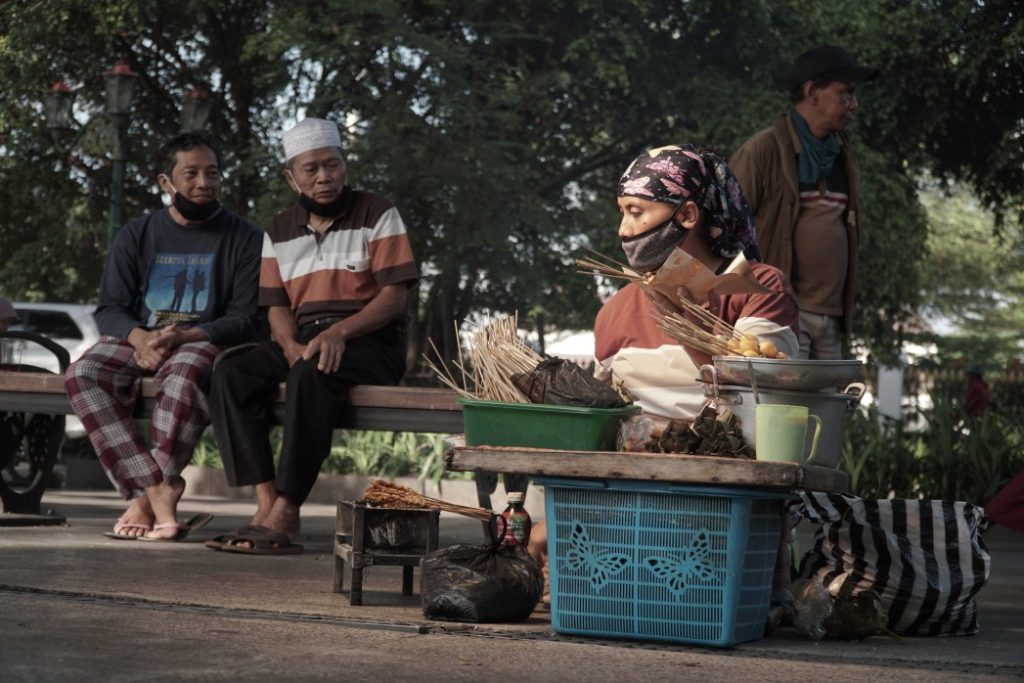Many Indonesians say good-quality oil is always out of stock or too expensive.
Palm oil is a useful thing. It’s used in so many food, cosmetic and toiletry products that you can find it listed as an ingredient in half the packaged stuff in UK supermarkets. It’s also used as biofuel, animal feed and regular cooking oil. This last use is its primary function in Indonesia, where most palm oil is made. The country produces over 40 million tonnes of the stuff every year - which is about 57 percent of the world’s total.
That makes it seem a bit weird that for weeks Indonesia has had a huge palm oil shortage. Indonesians have been queuing for hours to try and get hold of the stuff, only to frequently leave empty handed. What is available is often either poor quality or too expensive for many to afford.
When figuring out why this might be the case, one stat that jumps out is the export figures for Indonesian palm oil: three-quarters of the stuff is sold abroad. In general, producers often prefer to sell to foreign companies, because their deeper pockets means they’ll pay more for the goods. Selling stuff for a higher price can benefit societies as well as individual businesses - higher profits can translate into job creation, increased wages and more tax revenue. But it can also create a system where locals struggle to get hold of domestically-produced goods.
The Indonesian government seems to have had some concerns that this is indeed happening, because in January 2022 they decreed that palm oil producers had to sell 20 percent of their oil to Indonesians. In March they raised this proportion to 30 percent. But after a big backlash from palm oil producers, they scrapped all quotas.
Is the removal of the quotas causing the shortage? Palm oil producers say no. For one thing, the crisis started before they were scrapped. For another, according to producers, even when Indonesians can buy all the palm oil they want, they don’t use 20 percent of the oil total, making the quota wasteful.
Plus, the government is still trying to influence the palm oil market to keep more of the stuff at home: it replaced the quota with a larger tax on palm oil exports. The idea is that making it more expensive to sell oil abroad than at home will erode the producer's preference for richer foreigner buyers that we mentioned above, while still making it worthwhile for them to sell surplus oil abroad if there are no more takers at home. Since the tax came in, palm oil has apparently become much more readily available in Indonesian shop than it was. The main problem now is its (un)affordability.
That brings us onto another potential cause for the palm oil shortage. Some fingers have been pointed at another now-rescinded government policy: price caps. In February, right before the crisis started, the government introduced a maximum price for local palm oil. This made it so the highest-quality stuff cost about $1 a litre. In mid-March it got rid of the cap and palm oil prices were immediately bumped up more than three-fold. So one argument is that the price cap made palm oil too cheap to make it financially worthwhile for producers to sell it - hence, empty shelves. This seems particularly plausible to some people because palm oil producers have had their own costs go up a lot recently. Supply chain issues caused by the pandemic and the war in Ukraine has pushed up the prices of the things they need to make palm oil, such as the fuel that powers their machinery.
However, there is also some evidence that some big businesses saw the price cap as an economic opportunity to stockpile the stuff and then sell it on for a higher-than-legal price to customers desperate to get hold of it. The Indonesian courts think some of these businesses also colluded with each other on this scheme (as lots of competitors selling palm oil for $1 would ruin their plan). Such colluding behaviour - known as being a cartel - is illegal.
Read our explainer on: trade

